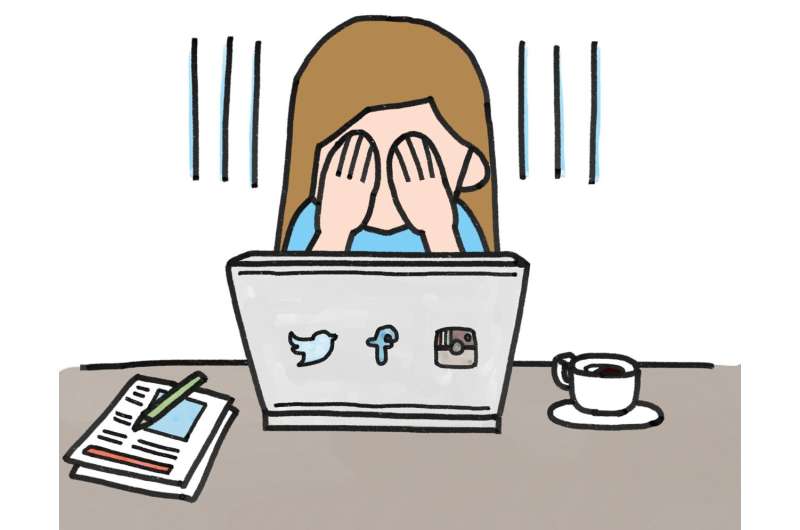This article has been reviewed according to Science X's editorial process and policies. Editors have highlighted the following attributes while ensuring the content's credibility:
fact-checked
trusted source
proofread
Detecting depression on social media

Research published in the International Journal of Data Analysis Techniques and Strategies demonstrates how a semi-supervised deep learning model can be used to identify signs of depression in online social media users. Given that mental health is high on the modern medical agenda, the development of methods that can help spot early symptoms associated with mental health problems could be important in offering users an intervention sooner, rather than later.
Gaurav Kumar Gupta and Dilip Kumar Sharma of the Department of Computer Engineering and Applications at GLA University in Mathura, India, point out that identifying those at risk for mental health problems is an important challenge in the digital age. Many people spend much of their time online, working remotely, or otherwise isolated to some extent from face-to-face interactions and even those who don't can often mask problems, so diagnosis can be difficult. The challenge of pinpointing signs of depression amidst the vast sea of social media data could offer insight into mental health.
The team's approach used a detailed analysis of demographic and content-related characteristics, including both structural aspects and the semantic nuances of the data in social media updates. The system with its deep auto-encoder model can then extract statements and patterns of words associated with or characteristic of symptoms of depression. The insights available can be extended by allowing the algorithm to access a person's profile once an indication of updates associated with depression have been identified. Thus, by combining tweet depression scores, profile attributes, and hybrid knowledge, the system classifies users as either depressed or non-depressed.
The research demonstrates an improved accuracy over other methods by more than 11%. This could thus open up the possibility of developing the approach as part of a multimodal technique for identifying depression from other forms of online content, such as facial expressions, images, and video. How the diagnosis is used is then a matter for the individual and doctor.
More information: Gaurav Kumar Gupta et al, Depression detection using semantic representation based semi-supervised deep learning, International Journal of Data Analysis Techniques and Strategies (2023). DOI: 10.1504/IJDATS.2023.133012




















